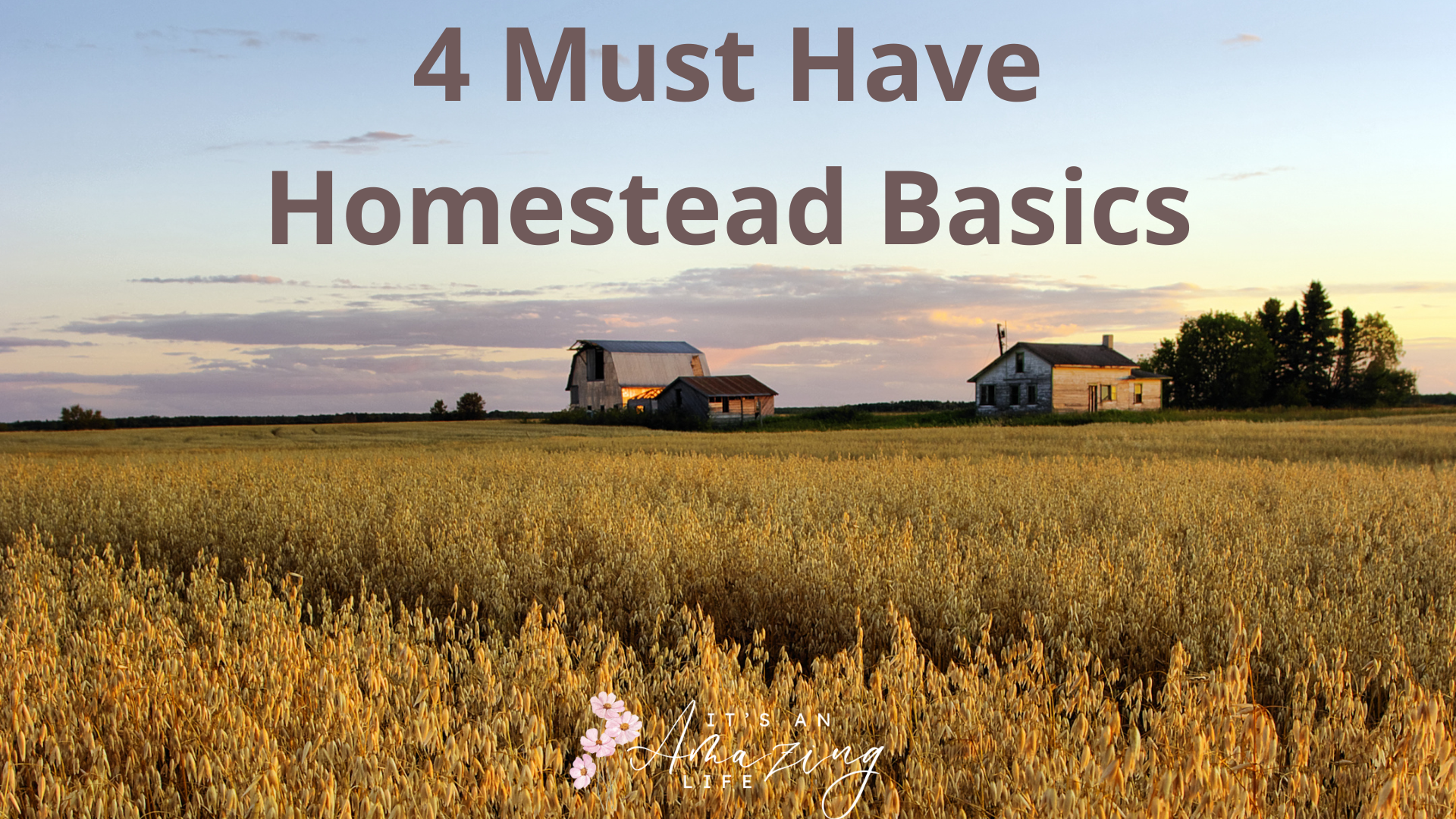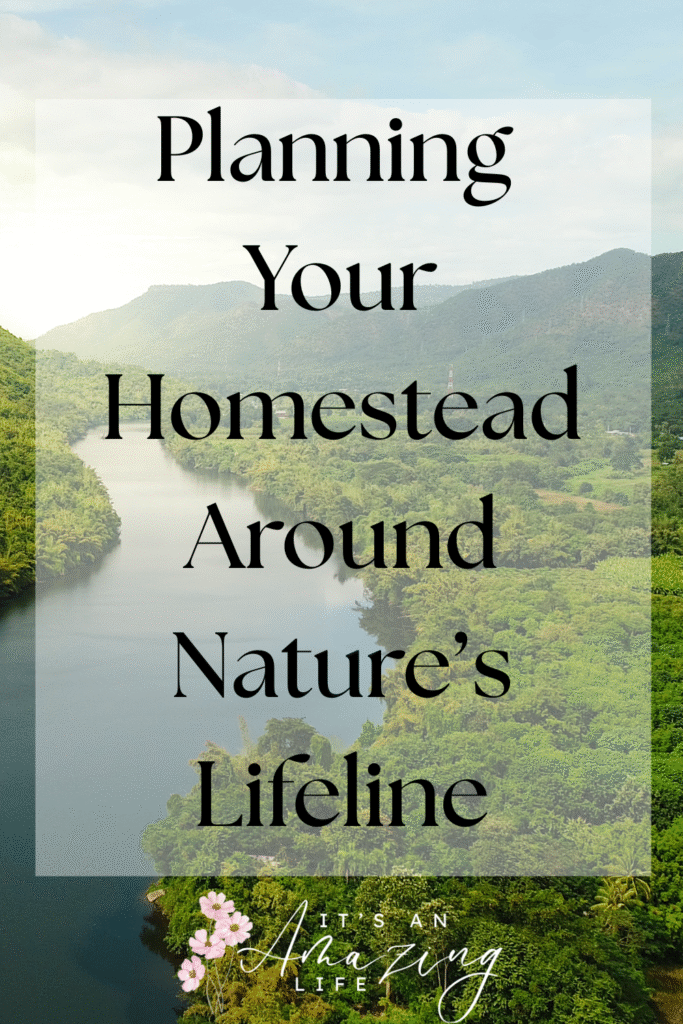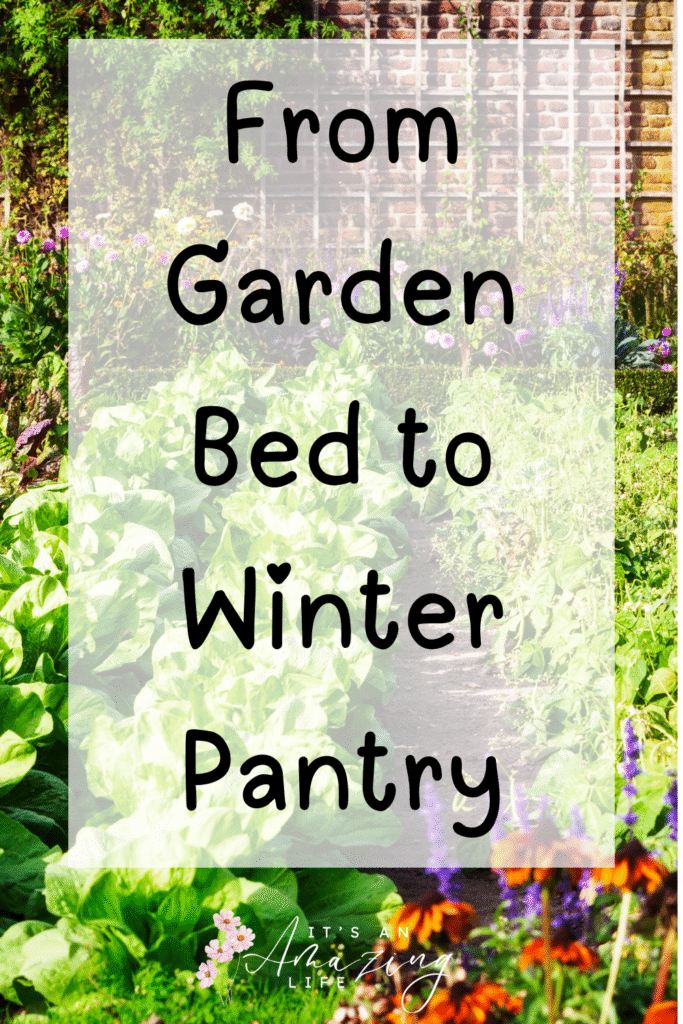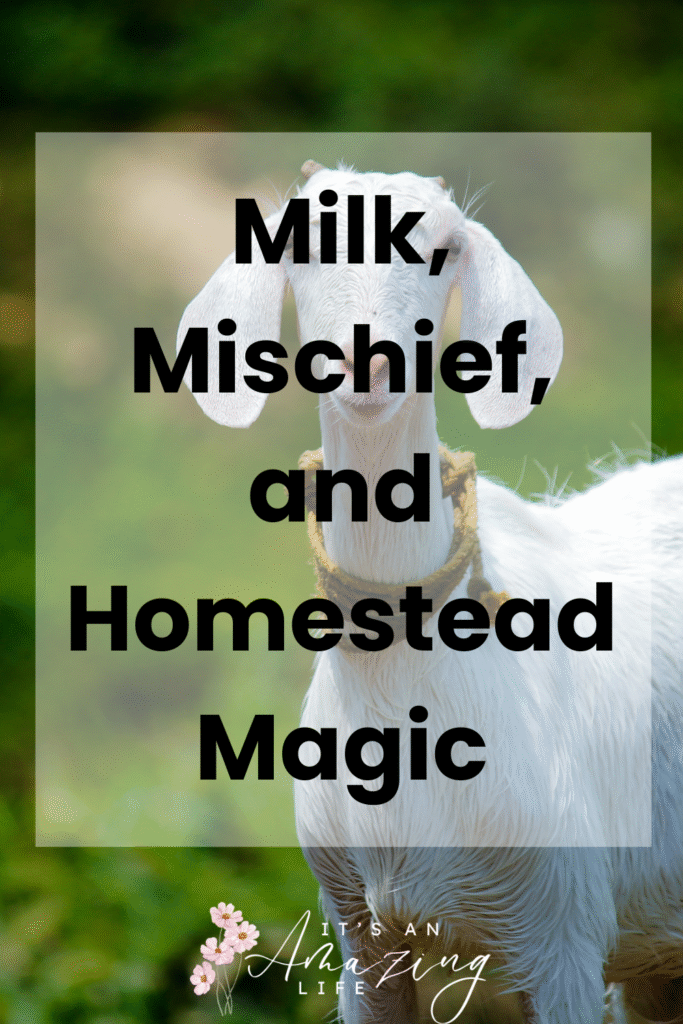Starting a homestead can feel overwhelming—land, livestock, gardens, water systems, and everything else on top of that. But after looking at countless homesteads, I’ve realized there are really just four homesteading basic essentials that make it all possible: land, shelter, water, and food. Everything else is a bonus that grows as your skills and resources do.
No matter if you live in a cold northern climate or a warmer southern one, these essentials form the foundation for a homestead that is doable, practical, and even fun. The good news? You can start preparing for them now.
Land: The Canvas for Your Homestead
Land is our starting point, the first homestead basic essential—the playground, the workshop, the future stage for all of our homesteading adventures. But before we buy that dreamy acreage, let’s ask a few questions (yes, even the boring ones):
- Do we have enough space for chickens, goats, gardens, and maybe that tiny barn we’ve been daydreaming about?
- What about future plans for the homestead, making sure there is enough room and zoning will allow everything you want to do with the property is crucial.
- Are zoning laws okay with us keeping livestock, building a home or putting up a greenhouse? (Yes, in some places, even collecting rainwater could get you in trouble—who knew?) Agricultural zoning doesn’t automatically mean you can keep chickens or pigs.
- Do we have neighbors, and are they the type who wave hello or the type who clutch their pearls at a chicken crossing the yard?
- How far are you from neighbors or the nearest town? Think about emergencies, getting building materials, renting equipment if needed or just stocking supplies, how far do you have to drive? Is it passable in winter (if in northern climates)?
- Is there an easement on the property? Do you have direct access or do you have to get permission from another land owner to access your property? Is the road to your property maintained in winter (if in northern climates) or will you have to dig your way out?
- Think about things the property has that are usable. Are there trees for building, for shade or for wind or fire breaks? Rocks if needed for building, or retaining wall if needed?
- Is there a water source? A pond, lake, river, etc. What is the water level there? If digging a well, how far will you have to dig?
Really think about and plan what all you want to do with the property, and then do your due diligence and check with zoning, the county, the state, etc to make sure everything you want to do is allowed on that land. Then get creative, land doesn’t always need to be purchased outright. Leasing, co-ops, or joining a land-share program can be a way to get started. Sometimes neighbors will even donate surplus materials like fencing, wood, or outbuildings. Community-minded homesteading is all about asking, trading, and reusing.
Think of land as your canvas, and you’re the artist—careful planning now makes the masterpiece much easier later.
Shelter: Homes for Humans and Critters
Shelter isn’t just about a roof over your head—it’s about safety, comfort, and a little bit of creativity. Which brings us to our second homesteading basic, shelter. And yes, your animals deserve secure and cozy homes too. Protecting them from weather, predators, and escape plans is key. Think of it this way: a well-designed shelter keeps everyone snug, safe, and happy, while giving you peace of mind.
Questions to keep in mind:
- What kind of housing works for us: tiny cabin, mobile home, modular home, container home or full-blown homestead house? Again, think outside the box, can an extra outbuilding already on the property be turned into a home? You want to make sure that you have good insulation in the winter and a heat source. Thinking about the heat source, make sure that it is sufficient to heat the space you are in. In warmer climates, good ventilation and a cross breeze will do wonders.
- Where will the animals stay? Do they need a coop, a barn, or a mobile palace? It is easier to keep warm in winter if the coop or barn fits the animals. Don’t put chickens in a large barn as it would be harder to keep warm. Make a smaller coop with enough room for the amount of chickens you have, but a lower ceiling so there is less room to heat and insulate well. Insulate barns with straw bales, sawdust, or even old newspapers. Windbreaks are essential, and a little creativity goes a long way. Think ventilation, shade, and water access. A well-placed tree can be as valuable as a $200 fan. Get creative with what you have.
Shelter doesn’t have to be perfect from day one—start with what you have and expand as you grow. Think about protection from the elements and expand on that. Don’t have money for a house just yet? You can park an RV, mobile home, tiny home, build a modular home, etc temporarily until you can afford to put the home of your dreams on the property.
Water: Life in Liquid Form
Water is one of those things we often take for granted…until the pipes freeze or the well runs dry. Planning water isn’t glamorous, but it is life-saving, plant-growing, critter-loving essential. Which brings us to our third homesteading basic, water. Everything needs water, it is essential for survival. Without a water source your plants don’t survive, your animals don’t survive and you will not survive. Water is one thing that I plan back ups for my back ups. Yes, you can possibly have water shipped in at a hefty price, but it isn’t sustainable long term, unless you got a lot of money hidden in jars in your back yard or your growing a money tree! Homesteaders need to plan their water carefully, both incoming water and waste water.
- Sources: Does your land have a pond, stream, spring, or well? In colder climates, consider freezing issues; wells need to go below the frost line. In warmer climates, drought and water rationing are important considerations. Also, water conservation is key. Rain barrels, drip irrigation, and shady tanks make a big difference. If not, research different options and well types for your area.
- Infrastructure: Where will you get water to your house, livestock, and garden? Consider gravity-fed systems, pumps, or rainwater capture (if legal in your area).
- Waste: Greywater (from sinks or showers) and blackwater (from toilets) must be managed responsibly. Composting toilets, septic systems, or bio-filtration setups can help you recycle water safely.
- And yes—some states have laws about rainwater collection. Before you get all DIY with barrels, check your local rules! I believe this to be absolute horse manure, but I would rather find out before buying the property and relying on this source of water.
Remember: water isn’t just for drinking. It’s for gardens, animals, cleaning, and occasionally washing off mud-covered boots after chasing a runaway goat that ate through your fence! Water planning might sound boring, but it’s essential. A reliable water system reduces stress, keeps animals alive, and makes growing food possible.
Food: Growing, Raising, and Preserving
Food is the heart of homesteading. Which brings us to our final homesteading basic, food. It’s nourishment, skill-building, and the satisfaction of saying, “I made this, I grew this, I preserved this.” When we plan what we eat and grow, we’re building self-reliance.
Questions to ask:
- Which protein sources will we have? Livestock, poultry, goats, rabbits, etc. Think about your climate and how each animal will react and live in your climate. Are you able to grow what they eat? What type of structure do they need? How much land? How much time do you have to tend to them?
- Are you planning on supplementing livestock (more reliable protein source) with hunting and fishing? Or just rely on hunting and fishing?
- What crops or orchards can thrive in our climate? What type of soil do you have? Will you need to make raised garden beds or be able to grow right in the ground? Short seasons will require green houses to start planting early and hearty crops like kale, carrots and root vegetables.
- Longer seasons mean more harvests but watch out for heat-sensitive crops. Shade, irrigation, and good storage are key.
- How will we preserve food: canning, freezing, dehydrating, root cellars. This will depend on if you have a reliable power source as well. Learning to can is a satisfying way to preserve food and what type of canning you use, either water bath or pressure canning will determine the food you are canning. I purchased an inexpensive canner that was around $60 about 10 years ago, that I can do both types of canning in. You do need a pressure canner, not just a pressure cooker. Dehydrating can be done with a purchased dehydrator, with a homemade dehydrator that is used with sun drying or dehydrating can be done in a low temp oven that is cracked open a bit to release moisture.
- Freeze Drying is a little more costly method but pays for itself over time. This also needs an electric source for several days for the freeze drying process. If you are set up that can power the freeze dryer during the process which usually takes up to 2 days, you can freeze dry left overs, or freeze dry eggs, or even cooked or raw meat, vegetables, etc and make it shelf stable for up to 25 years. Once you are ready to eat it, you can then reconstitute to its original state and cook or eat how you normally wood. You can even freeze dry ice cream, candy, fruits and vegetables to eat in their crunchy freeze dried state. I got my freeze dryer from HERE. I liked the fact that they offer a layaway plan if you call them and they have other options for financing.
By starting small—one garden bed, a handful of chickens, a well-stocked pantry—we build confidence and skills before scaling up. That said, it’s smart to leave room for future growth. I like to plan ahead and set myself up for what I’ll need down the road. For example, I’ll make my garden bed big enough from the start or size a chicken coop for the flock I’ll eventually have. It’s often easier to get it mostly right upfront than to keep patching and adding later. You know that old homesteading adage? Measure twice, cut once—and maybe keep a tape measure handy for when the chickens start expanding their empire.
No matter if your dream is a cozy homestead or a larger property with multiple projects and revenue streams, every homestead starts with these four basics. Happy homesteading!
Stuck in the homestead planning stage? Grab the Homestead Mindset Blueprint and start moving forward!
Loved this post? Pin it now and save it for your homestead inspiration!






